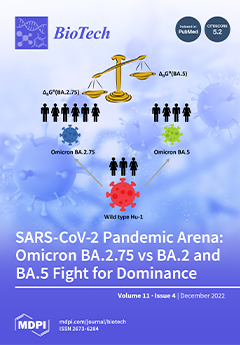Members of the phylum
Actinomycetota (formerly
Actinobacteria) have historically been the most prolific providers of small bioactive molecules. Although the genus
Streptomyces is the best-known member for this issue, other genera, such as
Gordonia, have shown interesting potential in their specialized
[...] Read more.
Members of the phylum
Actinomycetota (formerly
Actinobacteria) have historically been the most prolific providers of small bioactive molecules. Although the genus
Streptomyces is the best-known member for this issue, other genera, such as
Gordonia, have shown interesting potential in their specialized metabolism. Thus, we combined herein the result of a comprehensive literature survey on metabolites derived from
Gordonia strains with a comparative genomic analysis to examine the potential of the specialized metabolism of the genus
Gordonia. Thirty
Gordonia-derived compounds of different classes were gathered (i.e., alkaloids, amides, phenylpropanoids, and terpenoids), exhibiting antimicrobial and cytotoxic activities, and several were also isolated from
Streptomyces (e.g., actinomycin, nocardamin, diolmycin A1). With the genome data, we estimated an open pan-genome of 57,901 genes, most of them being part of the cloud genome. Regarding the BGCs content, 531 clusters were found, including Terpenes, RiPP-like, and NRPS clusters as the most frequent clusters. Our findings demonstrated that
Gordonia is a poorly studied genus in terms of its specialized metabolism production and potential applications. Nevertheless, given their BGCs content,
Gordonia spp. are a valuable biological resource that could expand the chemical spectrum of the phylum
Actinomycetota, involving novel BGCs for inspiring innovative outlines for synthetic biology and further use in biotechnological initiatives. Therefore, further studies and more efforts should be made to explore different environments and evaluate other bioactivities.
Full article






